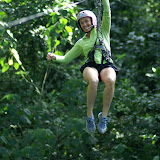



Evolution of the Walk...
Walk for the Earth is a sacred journey that started with my precious boxer boy Yoda who taught me, to Walk with intention and prayer, as the many Elders of the Lakota tribe shared with me in the Unipi Ceremony (sweat logdes), as well. Yoda was only six weeks old when we first started walking together. I heard the call from my Ancestors, the very first day we walked together, to allow Yoda to teach me the power in Walking in rhythm with the Rainforest. For close to three years, every day, I wondered how, why, where and when would be the right time to share all that I was learning from this precious four-legged creature and our Mother Earth.
Valentine's Day 2010 became the day that I would humbly share all my experiences, while my boy Yoda, who crossed over 44 days previous, would guide me from the heavens to story tell our sacred Walk for the Earth with the World. What appeared to be strangers of the walk became Yoda's disciples. From the heavens, the tribe of ten beautiful souls, two dogs and a jungle of various creatures seen and unseen, wrote poems and told stories that they been long forgotten, until Valentines Day on the Sacred Mountain of Manuel Antonio, CR.
Today, I am clear that love and devotion to hear the Call of the Wild in Animals and Nature will heal our Human Family; One step at a time... One person at a time... One tribe at a time... The time has come that we must all step into the Tribe called the Human Family and life among the primal forces that bring us home to the Sacred Laws of Nature.
((( aho )))
V-day Walk
Healing Mother Earth












